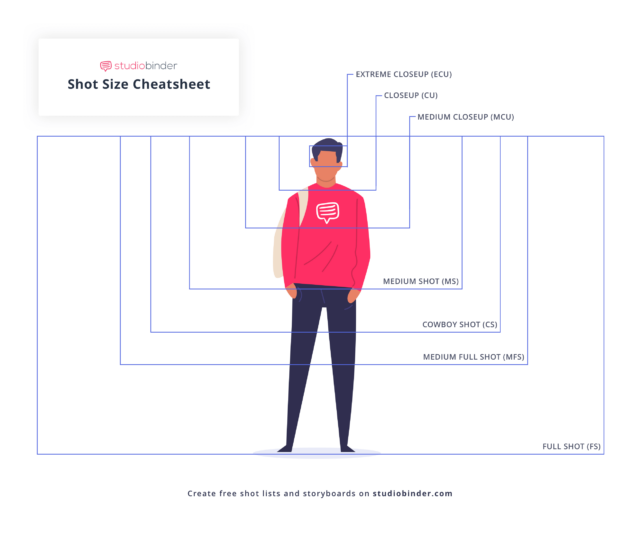Video content is indisputably the most engaging media nowadays. But what makes it such an effective tool? Image and sound work simultaneously, while infographics, if available, give additional information. In a video, we are moved and affected by the images we see. We can observe a process and understand an overall situation, be it a presidential inauguration, cooking show or street demonstration. We are captured by the story.
Elements of a great video story
“What’s the big idea?” That’s something people used to say in Hollywood movies in the 1940s (Manriques, McCluskey, 2015). The question is still relevant today, as the audience wants to see a good story.
Of course, in a video it’s not practical to include all the classic storytelling stages – Stasis, Trigger, The quest, Surprise, Critical choice, Climax, Reversal, Resolution (Watts, 1996) – but here are the four elements of a great video narrative
- Character – the protagonist, a person who is easy to relate to
- Quest – the exciting steps a character makes in order to solve a problem
- Climax – the most intense point, a milestone when the character reaches the pursued
- Resolution – the closing point, time for making conclusions, for example raising awareness regarding an issue, or sparking interest in a certain product.
This structure makes a video catchy, be it a documentary or a commercial video.
Have a look at this two-minute video telling the story of a young boxer from Iran. Abdalla supports the Refugee Olympic Team, which is due to compete at the Olympic Games in Brazil in 2016. The author shows us the path of the young man, his struggle and his aspirations. At the same time, it is quite hard not to cheer for the team.
That’s how narrative engagement with the audience is created. And you will probably like, comment or even share a video if it presents an engaging story that connects with you, your feelings and your experiences.
Storytelling is widely used in marketing campaigns.
A good example is the Adidas spot “More than the sum”. Only in the middle of the story about an athlete do we discover that he is also a… ballet dancer. The culmination is his dance, which gives us the sense that he does not fit neatly into a certain category.
Remember that such stories always appeal to the audience. Concise, easy to perceive and emotional.
Visual Grammar
The rich visual information we receive in every video is transferred through composition basics. This leads us through the video and helps us to focus on what is important and not in order to observe minor details. When recording a video about, for example, an event or an interview, you can apply these basic rules (Millerson, Owens, 2008):
- Divide the screen into thirds both, horizontally or vertically. The main subject should be on one of those lines or, ideally, on the intersection of two of the lines. The rule of thirds suggests that the main subject should not be in the middle of the image. Instead, it should be placed before or after the centre of the image, depending on the effect you would like to create.
- Leading lines is when the lines within the image lead the viewers’ eyes to what you want them to look at.
- Framing the subject can add depth to the scene. The frame could be a tree, a fence or, better yet, something that adds meaningful context to the subject. It is important that the frame does not detract from the subject or message.
- When taking shots of people, always look out for the headroom (the space between the top of a person’s head and the top of the picture). If there is too much space, the image becomes unbalanced and the audience’s attention is drawn to the space to see what is there.
- Shooting from different angles: When shooting people, low-angle shots make them look important. A high-angle shot, which looks down on the subject, can make the person look small and insignificant.
You can find a detailed description of each rule here.
Remember that how you choose to frame your subject will have a specific impact on the viewer. Find more about the number of subjects you feature in your shots as well as their physical relationship to each other and the camera in this article.
Primarily you need to distinguish the following shot sizes:
- Long/wide shots show people from head to toe. These are good for showing people together, and for showing action.
- Medium-long shots are closer. They’re sometimes called three-quarter shots because that’s how much of the body they include.
- A standard close-up shows the head and maybe a bit of the shoulder.
- A big close-up just shows the main features of somebody’s face. You can also use close-ups of things, to show patterns and details.

Learn more about the kinds of shots here.
And once again – if you understand how to adjust the shots, you will tell the story the way you want. Please don’t forget about other important elements, namely good recording and proper lighting.
Key stages of video production
Planning the shooting is essential and will make the post-production process easier. As soon as the key message of the video and target audience is identified, you can start with the creation of a script. Then translate it into pictures and prepare a storyboard.
A storyboard is a sequence of drawings illustrating the shots planned for the video. The point is to visualise each shot and scene. It clarifies the narrative and helps understand the vision for the video. The pre-production phase finishes with planning the budget and the timeline of the shooting (lucidchart.com 2020).
The next step, in fact, is the production itself or “shooting for editing”. While recording the visual material for a project, one has to make sure that the shots cover all of the action from each angle required, so that there is enough visual material to show the entire story when it comes time to edit. After this, the picture and soundtracks are edited together, special visual effects are generated, titles/graphics/credits are added, sound effects are created and music is scored during post-production (Thomson, Bowen, 2009).
Whatever you end up cutting, you should strive to combine your picture and sound elements in the best way possible. The shot choices you select, the rhythm and pacing of the individual edits and the transition choices you make should all serve the story well and keep the viewing audience engaged, informed and entertained (Thomson, Bowen, 2013).
Please don’t forget about the “kill your darlings” principle which refers to creative work, be it writing, editing or design. It states that cutting beautiful shots that do not add anything valuable to the story benefit the overall product.
Youth worker, not a film director…
So what? You can still make the video appealing to young people! If you know the basics, you can deliver a message (for example, about youth work), promote an initiative or assist the activities of a project.
Besides this, you can engage young people in creating something they will really watch. By conducting video production workshops, you provide a learning environment in which young people can try to shoot different types of video (interview, documentary, action, etc.). They learn how to pitch a story to their peers. They also gain hands-on experience and learn how to work together, as every time one turns on the camera, the audio must be checked as well. Isn’t that teamwork?
Youth media production is adding to the plurality of stories, images and imaginaries operating in public space today, and in this sense, it is helping young people to arrive on the public stage and remake that stage in ways that can help to fortify and lend support to media democracy (Poyntz S.R., 2017).
Hundreds of videos are constantly being uploaded on vlogging platforms, and fast MoJo empowers young people now more than ever before. In the end, it is not only about filmmaking as a craft. It’s also about unlocking creative potential and developing a speak-up culture.





